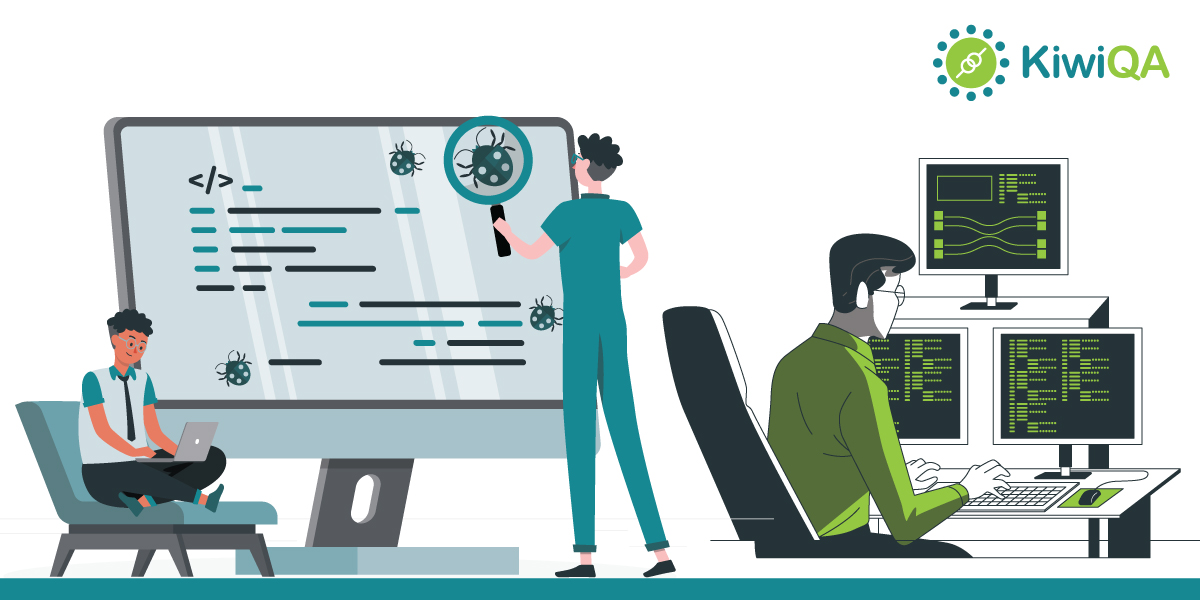Mobile applications (or mobile apps) have now become the de facto manner through which users access services (or products) on the internet. As per reports by Data.ai (earlier App Annie)[1], globally consumers are spending much more time on mobile applications in comparison to TV (and other mediums).
Average time spent on mobile apps topped 4 hours, 48 minutes in 2021 (30 percent more compared to that in 2019). There are three main categories of mobile applications – Hybrid apps, Native apps, and Web apps. Many consumers prefer using web applications when they intend to explore the features of a platform (or product).
For starters, web applications are websites (or application) software that are accessed from the web browser(s) present on the hand-held device. It is a given that consumers use web browsers of their preference for accessing the web application. Hence, it becomes essential to ensure that the end-user experience is uniform across different browsers, platforms, and view-port sizes.
This is where web application testing becomes extremely crucial, as it ensures that the web application is fully functional across different combinations. Many outsourced QA vendors like KiwiQA have extensive experience with web application testing services, hence onboarding such a vendor will add significant value to the entire testing process.
In this blog, we have laid down a detailed plan (or guide) that will be immensely useful in getting started with web application testing. So, let’s get started…
What is Web Application Testing?
Web application (or web app) testing is an in-depth process of testing the website on different browsers and mobile device viewports. When preparing the test plan, the test lead must prioritize the browser and viewport combinations on which the tests must be performed on a more frequent basis.
This is because it is next to impossible to run web app tests on all the available browser, viewport, and platform combinations. Web application testing encompasses different avenues related to testing of web apps i.e. security, functionality, compatibility, usability, reliability, and more.
Now that we have touched upon the basics of web application testing, let’s deep dive into the detailed guide on web app testing.
Also Read – Perfect Checklist for Effective Website Testing
Detailed Guide on Web Application Testing
Since web application testing encompasses different forms of testing, it is important to prioritize the one(s) that is more important for the project. Having said that, here are some of the major areas that must be a part of the web app testing strategy:
Functional Testing
Functional testing includes testing of the website (or web app) from the perspective of user interface, databases, and more. Interactions between the client (i.e. website) and the server are also tested as a part of functional testing.
In a nutshell, functional tests are instrumental in verifying the functionalities of each & every aspect of the product. Functional testing can be performed using manual approach, automated approach, and/or hybrid approach.
Functional testing typically encompasses the following tests:
- Execution of test scenarios
- Testing user flow on different web pages (i.e. identify broken links, verify inter-linking, etc.)
- Testing the readability and functionality on different device sizes
- Performing checks related to compliances (i.e. SOC2, ECMA, etc.)
- Running end-to-end tests to verify critical business scenarios (or workflows)
- Run exploratory and edge test scenarios to verify if the functionalities cater to every type of input
Interface Testing
There are three main components for any kind of web application (or website) – web server, application server, and the AUT (Application Under Test). As a part of interface testing, you need to test the communication between these three vital components.
Most websites leverage the advantage of caching to minimize the interactions with the server, particularly for scenarios where the updated data is readily available in the cache memory. Apart from this, you need to check if interactions with the database are handled properly. Since there could be intermittent database access issues due to flaky internet connectivity, you also need to check if relevant messages are displayed on the page for handling such issues.
Also Read – 6 Crucial Steps to Web Application Testing
Usability Testing
Usability aspects of the product are very important, else your customers might not stick enough to the website (or app). This is where usability testing becomes extremely important, as the features in the product are tested from an end-user’s perspective.
To maximize the benefits of usability testing, the product must be open for testing for a smaller specialized audience. Menu navigations, button clicks, interactions with drop-downs and other WebElements are tested as a part of usability tests.
Compatibility Testing
Consumers normally use their choice of browsers, platforms, and devices when accessing the application. However, the end-user experience might vary from one browser to another since each browser uses a different rendering engine. Over and above, the experience also differs on the viewport size on which the website (or web application) is accessed.
This is where compatibility testing comes into the picture. It is a broad term that encompasses different forms of compatibility tests – browser compatibility, platform compatibility, and mobile (or device viewport) compatibility.
The goal of cross browser/cross platform compatibility is to ensure that the product experience is uniform across browsers and devices that are in use by the users of the target market.
Performance Testing
Once the functionality of the website (or web application) is tested across different browser & platform combinations, it’s time to test the website from the perspective of reliability and scalability. At the end of it, the performance of the website must not deteriorate when a large number of concurrent users are connected to the website.
Performance testing is a testing methodology where the website’s functionality is tested at different speeds and loads. This aspect of the performance test is called Load Testing.
On similar lines, the website is subjected to varied loads to check how much load the website can be subjected to (without compromising on the reliability). At one particular threshold, the website’s performance might show deterioration. This aspect of the performance test is called Stress Testing.
Security Testing
Irrespective of the type of the website (or web application), it is always essential to focus on the security aspects of the product. Malicious actors are always on the lookout to exploit loopholes in the web products. This is why security of the product is of prime importance.
The data must be secure whether it is in transit or at rest. Security tests are performed to check whether the site’s SSL certificate is valid. What if some pages are accessible without proper authorization? Hence, all the pages in the user journey are tested using valid and invalid authorization techniques. This is to verify the authorization aspects of the app.
Secure transmission, authentication, authorization, denial of service, session management, etc. should be a part of the security testing checklist.
Also Read – Ultimate Checklist for E-Commerce Website Testing
Conclusion
Web applications have become an important touchpoint for customers. A bad end-user experience might result in higher customer churn, which in turn results in losses.
This is why web application testing is crucial since it plays a vital role in providing an exceptional user experience. KiwiQA is an experienced outsourced QA vendor that helps web companies with end-to-end web application testing so that quality web applications can be released in the market.











